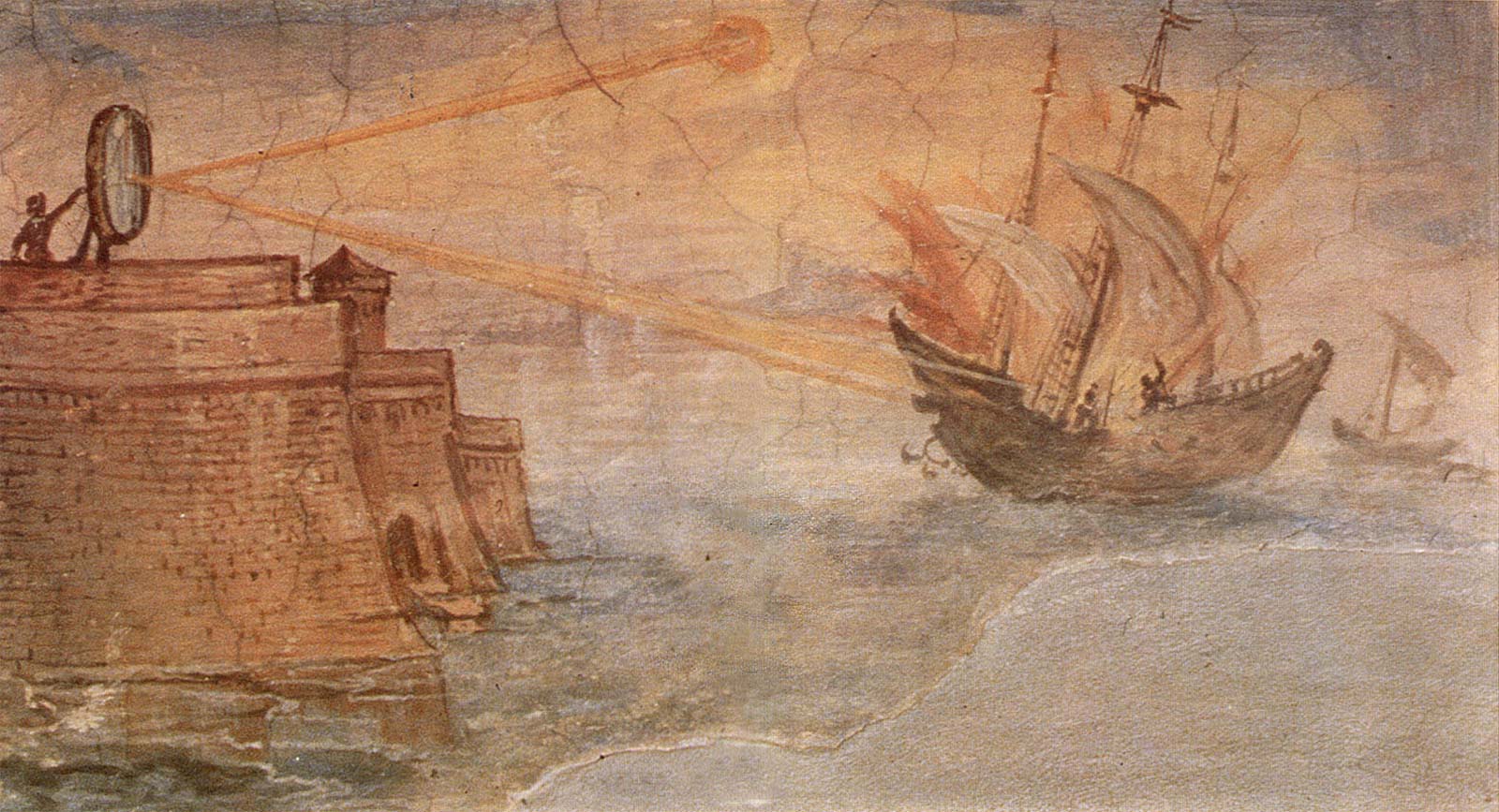Mar 2025
The Evolution of Directed Energy Weapons

Introduction
The concept of harnessing light as a weapon has captivated human imagination for millennia. From Archimedes' purported mirrors that focused sunlight to burn Roman ships, to the fictional "death rays" of science fiction, directed energy weapons represent the confluence of ancient aspirations and cutting-edge technology. Today, after decades of research and development, these systems have transitioned from theoretical concepts to battlefield realities, potentially reshaping the future of warfare through unprecedented precision, speed-of-light delivery, and cost efficiency.
Historical Development of Directed Energy Weapons
The modern pursuit of directed energy weapons began in earnest during the Cold War, with both superpowers investing heavily in laser and particle beam research. However, the technological limitations of the era—power generation, thermal management, and beam control—kept these weapons largely confined to laboratories and testing ranges.
Key Historical Moments and Breakthroughs
- Ancient Concepts: Archimedes' "burning mirrors" reportedly used during the Siege of Syracuse (c. 212 BCE)
- 1960s: Development of the first working lasers, opening possibilities for weaponization
- 1980s: Reagan's Strategic Defense Initiative ("Star Wars") accelerated directed energy research
- 1990s-2000s: Advances in solid-state lasers enabled more compact, powerful systems
- 2014: First operational deployment of a laser weapon (LaWS) aboard USS Ponce
- 2018-2024: Rapid advancement in power scaling, leading to systems exceeding 300kW
Current Directed Energy Weapon Systems
The past decade has witnessed remarkable progress in directed energy weapon development. What once required facility-sized equipment can now be mounted on vehicles and vessels, with increasingly powerful systems entering service worldwide.
Operational and Late-Stage Development Systems:
- LaWS (Laser Weapon System) - 30kW: First deployed by the US Navy in 2014, effective against small boats and drones at a cost of approximately $1 per shot.
- Dragonfire - 50kW: UK's primary laser weapon program, developed for naval and land applications by MBDA and QinetiQ under a £30 million contract.
- Iron Beam - 100kW: Israeli system designed to complement the Iron Dome air defense system, targeting rockets, mortars, and drones.
- HELIOS - 150kW: Lockheed Martin's High Energy Laser with Integrated Optical-dazzler and Surveillance, integrated on Arleigh Burke-class destroyers.
- HELCAP - 300kW: US Army's High Energy Laser Counter-Aviation Platform, designed for mobile, ground-based air defense against multiple threat types.
- HELSI - 500kW: Joint DARPA/Space Force initiative focused on countering strategic threats, including hypersonic missiles and satellites.
Strategic Applications and Advantages
Directed energy weapons offer revolutionary capabilities that address critical strategic challenges in modern warfare, particularly in countering the proliferation of low-cost threats like drones and providing cost-effective defensive options.
Asymmetric Warfare Solutions
The economics of modern conflict increasingly favor asymmetric approaches, where adversaries deploy numerous inexpensive weapons against costly defense systems. Laser weapons fundamentally alter this equation. Traditional interceptors like missiles can cost $1-6 million per unit, while a laser engagement costs mere pennies in electricity—approximately 20 cents for a typical 5-second engagement compared to $6,000 for conventional munitions. This paradigm shift enables cost-effective defense against swarm attacks and saturation tactics.
LiDAR Applications and Battlefield Intelligence
The same systems developed for weapons applications offer dual-use capabilities for enhanced battlefield awareness. Lower-power modes enable high-resolution 3D mapping, detection of camouflaged structures, and identification of underground facilities. When integrated with autonomous platforms, these systems provide unprecedented intelligence-gathering capabilities while retaining the option to transition to offensive operations as needed.
Remote Drone Charging and Energy Distribution
Perhaps the most revolutionary application lies not in destruction but in power projection. Low to medium-power lasers can transmit energy to photovoltaic receivers on drones, enabling indefinite flight times for surveillance and combat platforms. Naval vessels with nuclear power plants serve as ideal mobile energy hubs, creating networks of persistent unmanned systems that expand operational reach by hundreds of kilometers without the vulnerabilities associated with conventional refueling.
Future Developments and Implications
The evolution of directed energy weapons points toward transformative capabilities that extend beyond traditional military applications, potentially reshaping our relationship with energy itself.
Space-Based Energy Transmission
The techniques pioneered for laser power beaming to drones lay the groundwork for more ambitious energy transmission systems. Solar Power Satellites (SPS) could collect energy continuously in orbit, converting it to laser or microwave energy for transmission to Earth-based receivers. These systems could yield 5-10 GW per satellite, providing clean energy to fixed installations or mobile military assets, bypassing vulnerable terrestrial supply lines.
The Kardashev Scale Perspective
Viewed through the lens of the Kardashev scale—which classifies civilizations by their energy utilization—these developments represent significant steps toward Type I status (mastery of planetary energy resources). Current global energy usage (~10^13 watts) remains well below Type I capability (~10^16 watts), but space-based laser energy transmission networks could accelerate this progression, fundamentally transforming our energy infrastructure and military capabilities simultaneously.
Conclusion
Directed energy weapons represent far more than just another military technology. They embody a fundamental shift in how we project power, defend assets, and potentially distribute energy. The rapid advancement from the 30kW LaWS in 2014 to 500kW systems under development today demonstrates unprecedented technological acceleration.
As these systems mature, their impact will extend beyond conventional military applications. The same technology that enables a warship to defend against incoming missiles could power networks of autonomous platforms, extending operational reach without risking human lives. And ultimately, the techniques pioneered for battlefield energy distribution could transform global energy infrastructure, contributing to humanity's progression on the Kardashev scale toward more complete mastery of available energy resources.
The ancient dream of Archimedes has not only been realized but transcended. Directed energy weapons now stand poised to reshape the balance of power and possibly the very nature of human energy utilization in the decades to come.